I have been looking over this data for a few weeks and there are some interesting data points. First, I would like to thank everyone who participated. This is not a scientific poll, but rather an informal survey of those who chose to participate.
The survey consisted of ten questions and was posted on Facebook, Reddit as well as Radio World. There were 114 responses, which is a relatively small sample size and is less than anticipated. There were 5 people who opened the survey and then did not take it. This may indicate a level of apathy towards the subject. Most responses were from the United States, but there were a few from China, Europe, and Brazil. The average time to complete the survey was 1 minute 40 seconds.
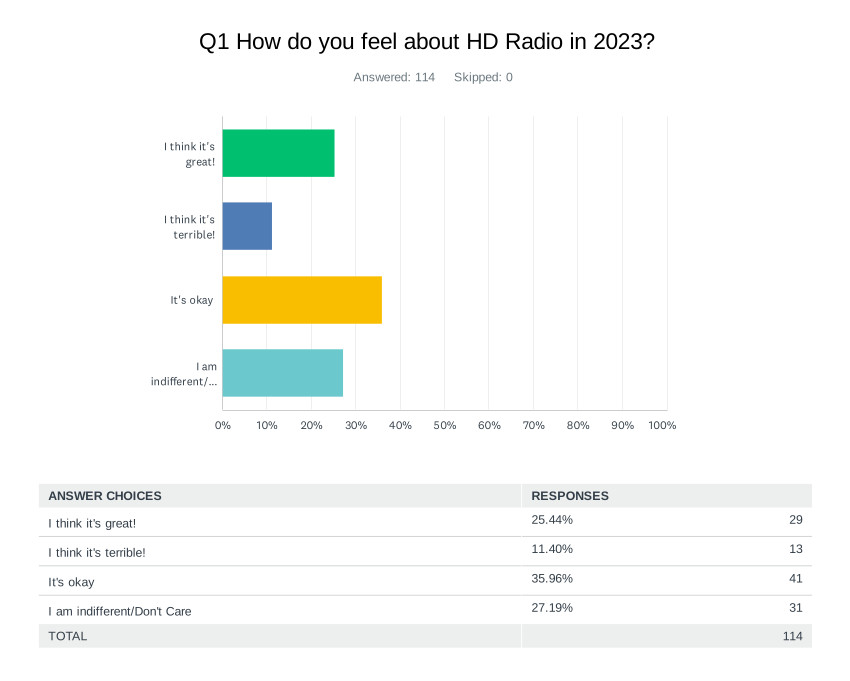
The first question was a warm-up question and it shows a lukewarm response at best with the top two responses being “It’s Okay,” or “I am indifferent.”
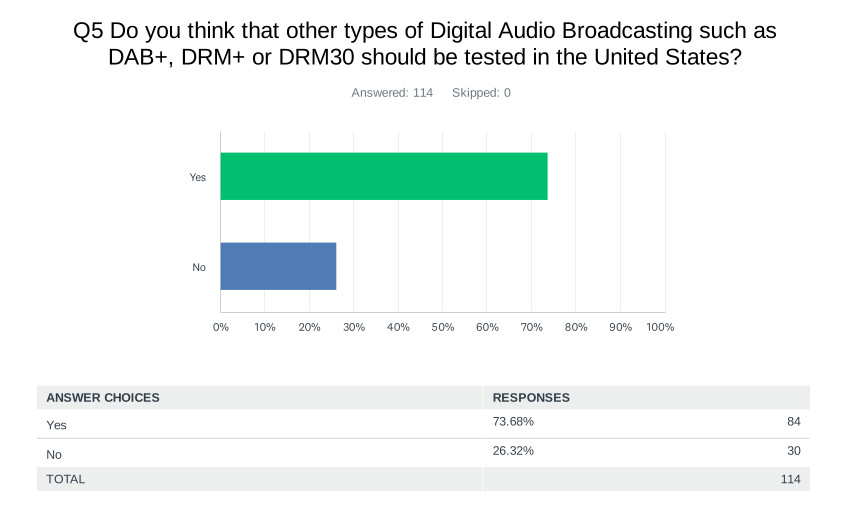
A vast majority of respondents feel that testing other Digital Audio Broadcasting systems such as DRM30, DRM+, or DAB+ would be a good idea. In MB docket 19-311, the FCC left the door open for such testing in the future, stating in paragraph 26 “Finally, we (the FCC) emphasize that by approving use of HD Radio technology, we do not foreclose the possibility of authorizing alternative technologies in the future, if they are properly before us.”
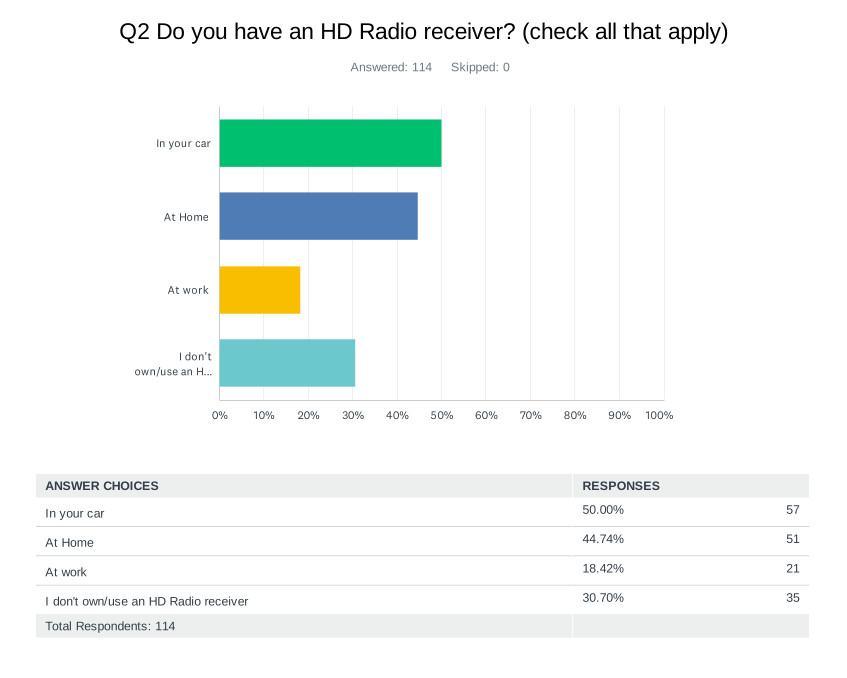
Question #2 was an attempt to find out where most people are listing to HD Radio and radio in general. Not a great surprise that it is mostly in-car listening. The in-home listening is a little bit surprising. What is even more surprising is that 30% of the respondents do not have an HD Radio. HD Radio has been the digital audio broadcasting standard in the US since October 2002, when the FCC first authorized its use. Receivers are still an issue some 20 years into the project. I know that when I purchased a new vehicle (Ford) in April of this year, HD Radio was not an option in any but the highest trim packages. My first HD Radio receiver was a tabletop Sony XDR-S3HD purchased in 2006 or so for $200.00 which was a lot of money. A quick look on Amazon shows that the least expensive HD Radio is the Sangean HDR-14 for $70.00.
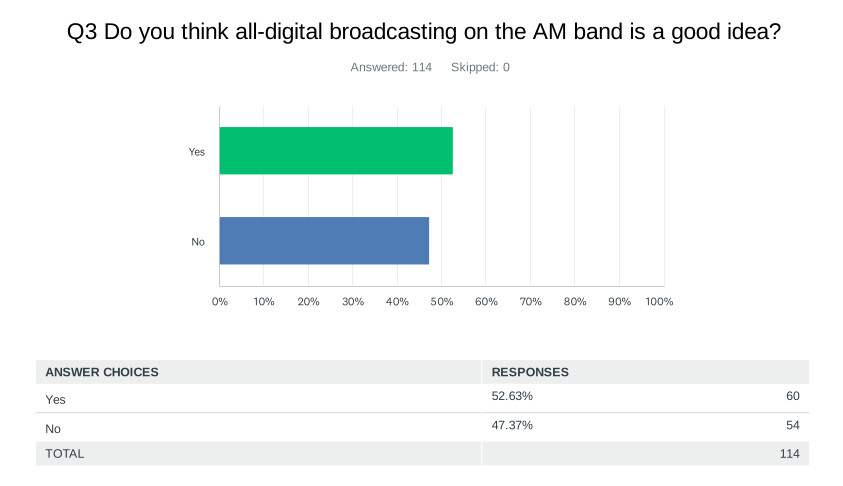
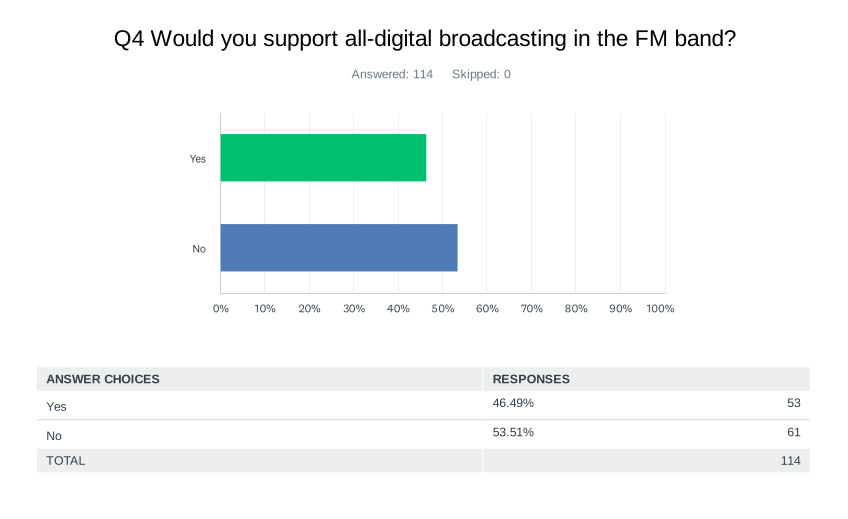
Questions #3 and #4 deal with the “analog sunset,” as originally proposed by iBiquity, the developer of HD Radio technology. After a period of time, according to the original plan, stations would turn off their analog signals in favor of all digital transmissions. In October of 2020, MB Docket 19-311 the FCC has allowed AM stations the option to do just that. Thus far, four AM stations have transitioned to all-digital broadcasting, one of which is off the air since the owner passed away.
According to the survey respondents, by a slim margin of 53-47%, all-digital AM is supported. The FCC has yet to consider all digital FM and by an equally slim margin of 46-54%, all digital FM is not supported.
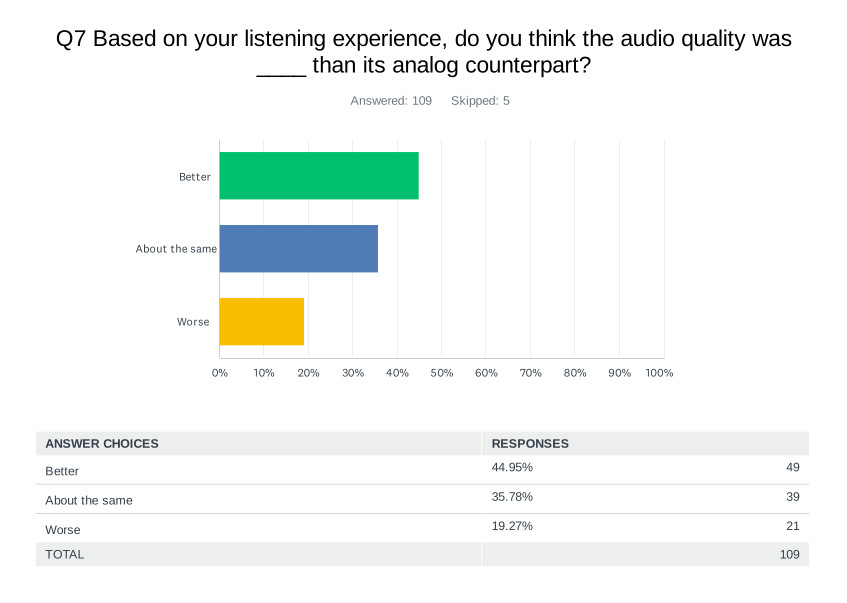
Question #7 asks about perceived audio quality. I received a few email comments about this question. Three respondents noted worse audio quality on HD-2, HD-3, or HD-4 channels due to reduced bit rate CODECS. Five people skipped this question.
This gets to the crux of the problem; for radio station owners, it is expensive to purchase and install HD Radio equipment. If there are no great perceived improvements, what is the point? I find AAC audio codecs to be okay, however, there is a noticeable difference between CD player PCM and streamed audio no matter what the source. Low-bit rate codecs sound like they are coming from underwater. Why do we listen to the radio? Information and entertainment. I posted something many years ago: Listening to the Radio is like doing Cocaine. For the maximum dopamine effect, I like my music to sound like music, not some watery approximation.
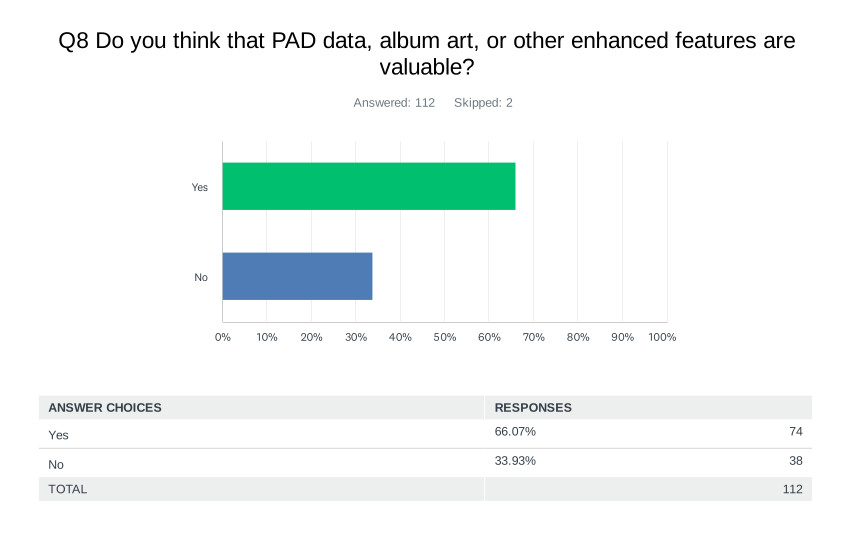
Question #8 asks about additional features, most people find Program Associated Data (PAD) useful. Even in non-digital FM stations, RDS is an important feature and stations will get phone calls if the RDS is missing or stuck on one song for a prolonged time. Listeners have become used to glancing at the radio to answer that age-old question; what’s the title of this song?
In response to question #9 (How many hours per week do you listen to the radio (including streaming terrestrial broadcast radio stations via a website or smart device)? The average was 19.6 hours with a minimum of half an hour and a maximum of 90 hours. Interestingly, there were four people who put in 0 weekly listening hours.
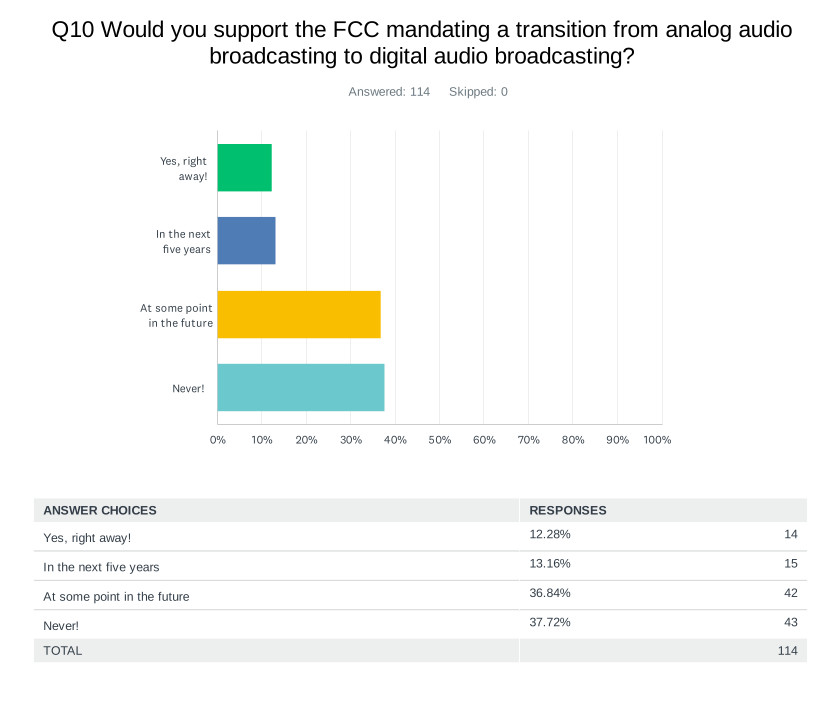
Question #10 is very interesting. In spite of the lukewarm feelings it seems that most respondents would favor the FCC mandating a transition to all digital audio broadcasting by a margin of 62% with most opting for “at some point in the future.”
HD Radio has been stalled for some time. The technology has not lived up to the hype and for most stations, it is a way to feed an analog translator with additional programming. There is an overall lack of interest, the majority of those who did take the survey stated HD Radio was “okay.” Receivers are expensive and still difficult to obtain. All digital AM (HDMA3) has not progressed very far since the FCC allowed its use. Yet, the people who did respond felt that additional testing of various Digital Audio Broadcasting systems should be allowed. I don’t know, that ship may have already sailed.

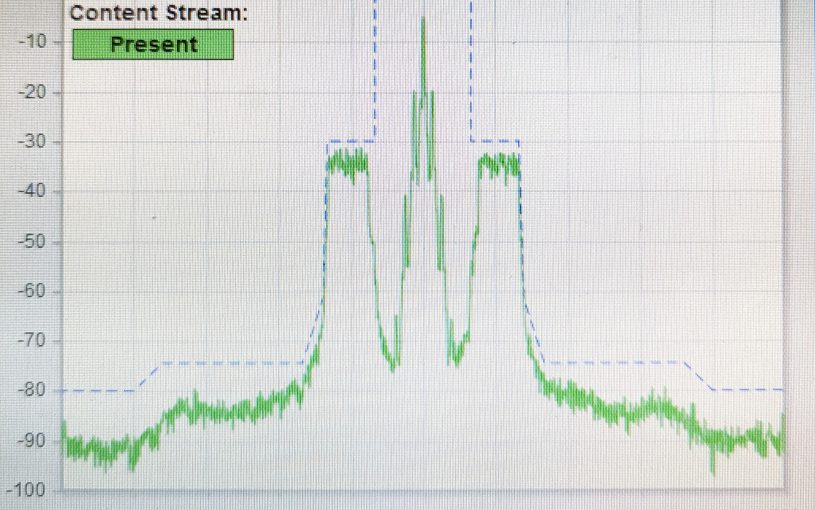


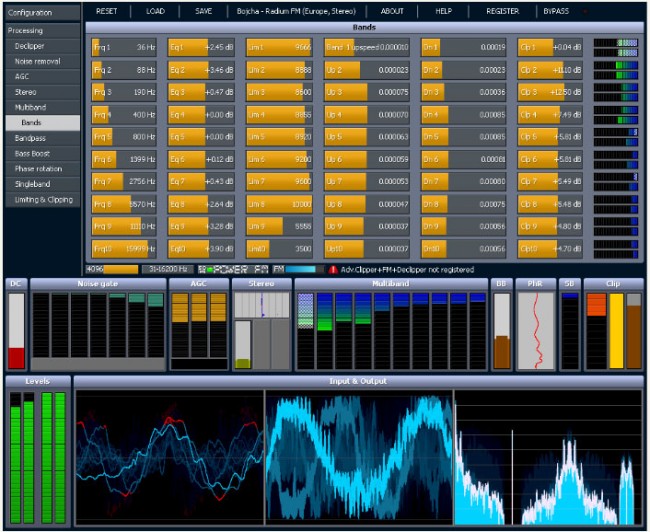

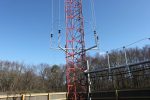
Paul,
I didn’t participate in the survey, my answers would have been warped in different directions. As a listener I don’t much care about HD in general. As a listener I think would be opposed to a forced transition to all digital, harder to get the stations that way. As a contractor I would be in favor of the transition, I would make some money on what is kind of a boondogle. The one AM all HD I was involved in has programming that few listen to in any format. And FM HD for my clients is pretty much just an excuse for an analog translator. Last I asked listening to some station’s streams is higher than listening to HD.
I have a receiver here at work and one at home. The HD-2, HD-3, etc.
used to be great. They had formats that I could listen to all day. The spot loads were not annoying.
Then, one day, they were gone. Most of the stations here (Detroit market) dropped everything except the HD-1. Some have returned, but they are just rebroadcasts of the “translator networks” or some AM stations. Two are the gambling format! Now I don’t even turn it on anymore. Was fun while it lasted.
As for RDS, none were very good at it. One station group started using it for Ads. Nice to see a phone number for a lawyer all day!
Sadly here in Boston, all three of the big commercial operators, Audacy, Beasley and iHeart have all taken to halfway through songs removing the artist/title and replacing it with promotions, or even worse, Ads. iHeart was the first, now they all do it, and I find it to be not only incredibly annoying but something that will hurt radio more than it will help it. It gets even better when the PAD data “sticks” so you see “YOUR HOME FOR THE HOLIDAYS” over everything, including commercials. (ftr, that specific message was not stuck but one similar was…)
I think HD is fantastic for some formats – classical being one. I wouldn’t have expected it to sound to great especially at a compressed bitrate but it does. I know VT Public runs in extended hybrid mode at 48/48/24 kbps. Whatever they are doing for processing when they push through the codec is working. They had Omnia, but last I knew they switch to Orban. WMHT-FM sounds light years better in HD. I don’t think they’re using much of anything for a processor on analog, which is disappointing as the Orban classical presets make vehicle listening truly enjoyable.
For digital to work there are a few major steps that need to take place. Many have noted that there needs to be some sort of government requirement to include HD chips in all receivers. There also would need to be a requirement to include radio, as I could see manufacturer’s just leaving it out. While they’re at it, build HD receivers into TVs. Clean up the noise that plagues AM. Provide government grants for digital conversion just like they did for DTV – including vouchers for receivers just like they did with DTV. I could go on and on but you get the point.
Then there’s the programing — as others have noted. For a while there HD seemed like early days of FM with adventurous and niche formats. A lot of those died because of costs – which those cost barriers should be removed, starting with the HD fees.
There’s a lot of potential still, but there are a lot of problems too – again as noted here by others. If Congress is going to act to “save AM” then they need to act and take care of the whole package.
Bill, In general, I agree with you. There do not seem to be very many interesting or compelling reasons to listen to HD.
Chris/Mike, sadly many stations are now using RDS as an additional revenue stream. It is not bad if done in moderation, however, most radio operators are immoderate. Just like when the Voltair came out for the Arbitron PPM markets, they can’t help themselves.
Brian, you bring up some good points on receivers and how the FCC handled the DTV transition differently. I think much of what they did for TV was so that they could repack the upper UHF frequencies then “sell” the newly cleared-out frequency spectrum to the cellular phone carriers for mobile data. Unfortunately, no such opportunities exist for the radio spectrum, so it is highly unlikely that the FCC has any interest.